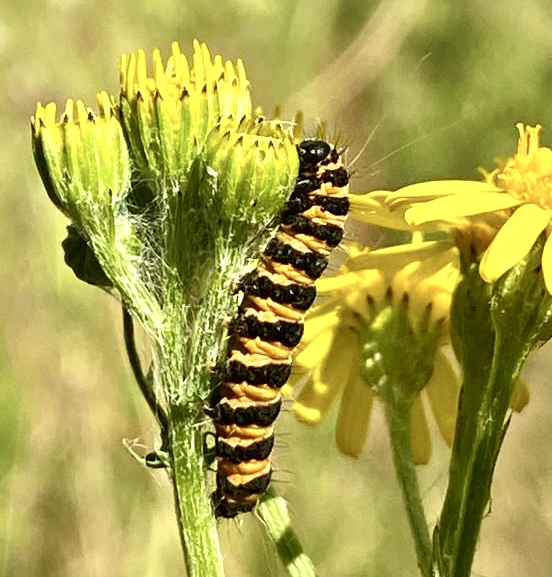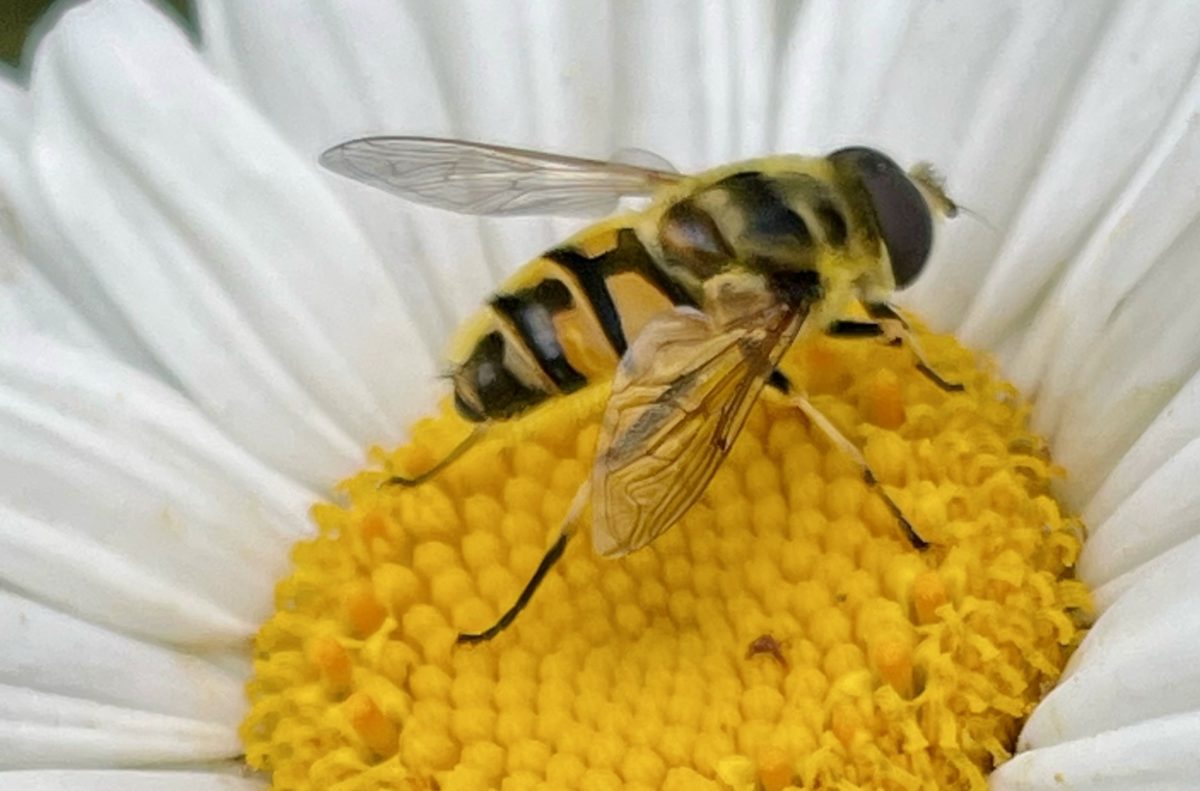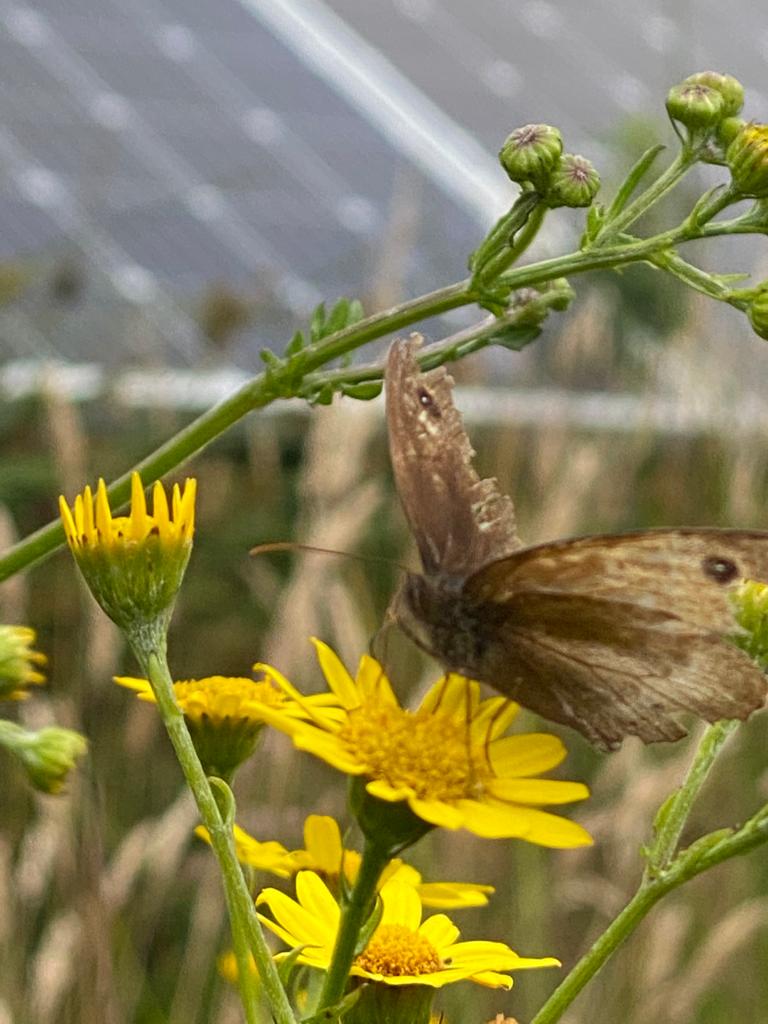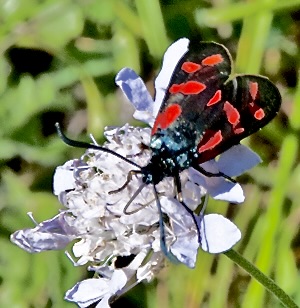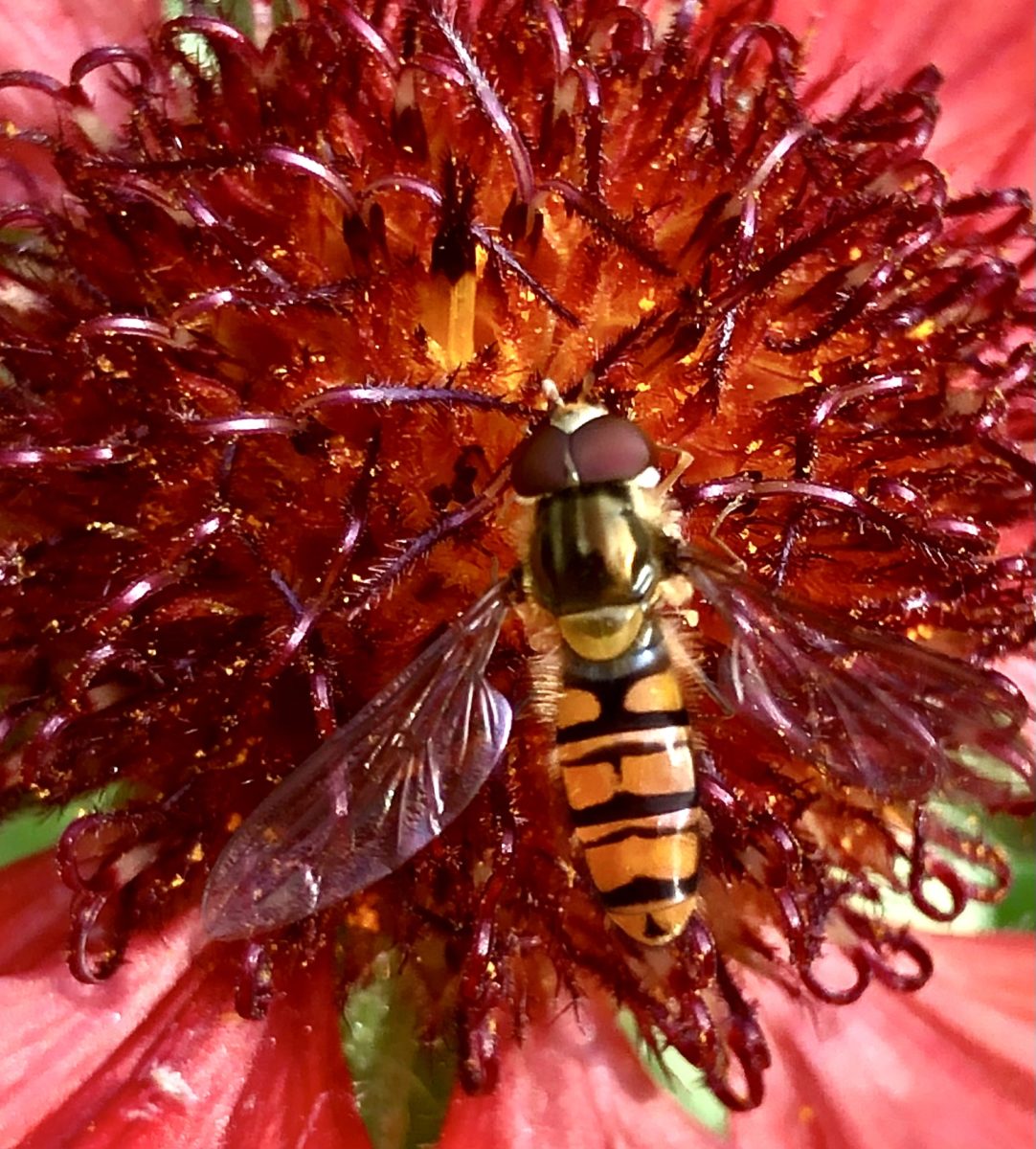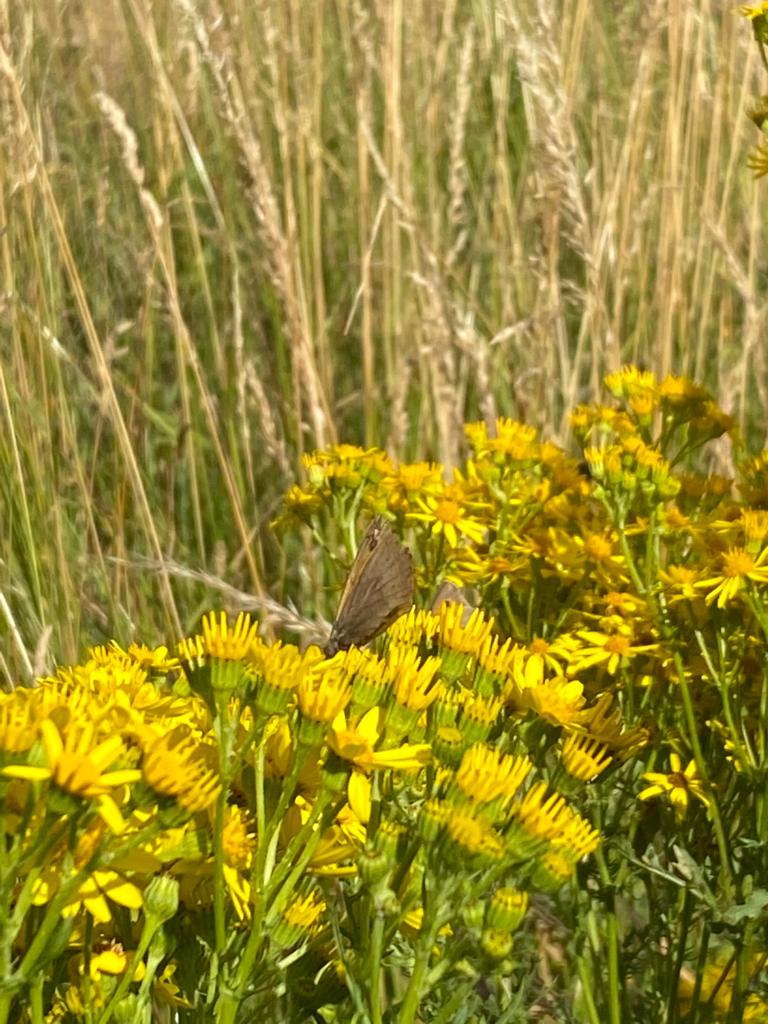Ragwort
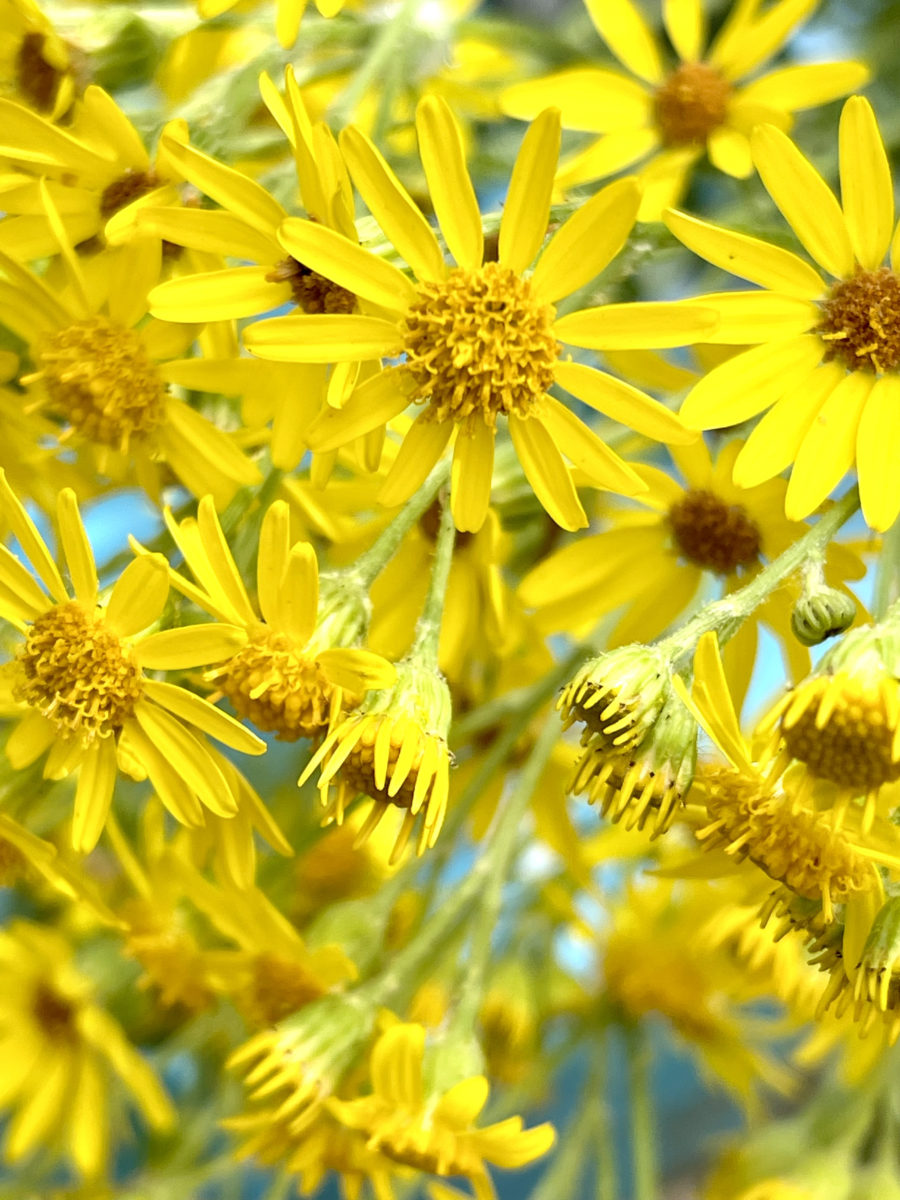
Ragwort is a common wild flower. Its common names include, common ragwort, stinking willie and tansy ragwort (though its resemblance to true tansy is rather superficial). Its scientific name is Jacobaea vulgaris or Senecio jacobaea. It is not particularly a woodland plant, it is found in dry, open places - on waste land, waysides and (grazing) pastures. It is not a plant favoured by land owners because it has toxic effects on cattle and horses. It is generally considered to be a biennial, but can persist for some years.
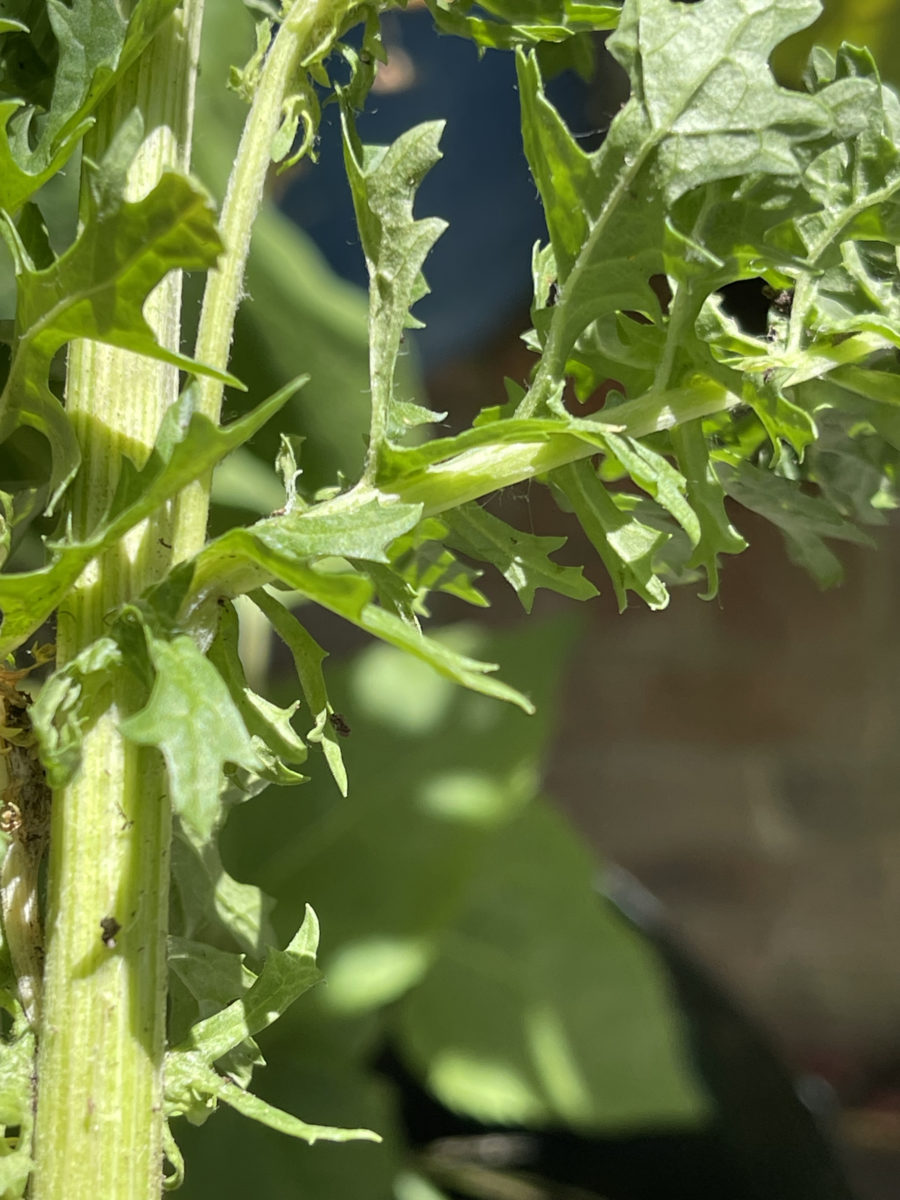
Leaves and stem.
The stems are erect, straight, basically hairless. The actual plant may grow to a considerable height, up to two metres. The leaves are lobed in a ‘pinnate’ fashion. The leaves have a distinctive smell that has lead to some of its common names - such as stinking willie.
Ragwort is a member of the daisy family, and its flowers are massed together into dense, flat topped clusters. Actually each ‘flower’ is made up of many small, individual florets. In the centre are the disc florets, and around the edge are the ray florets, which have a large lip or flap, serving to increase the visibility to pollinators. During the flowering season, a plant may produce many thousands of seeds. The seeds have hairs attached to them, which help in dispersal.
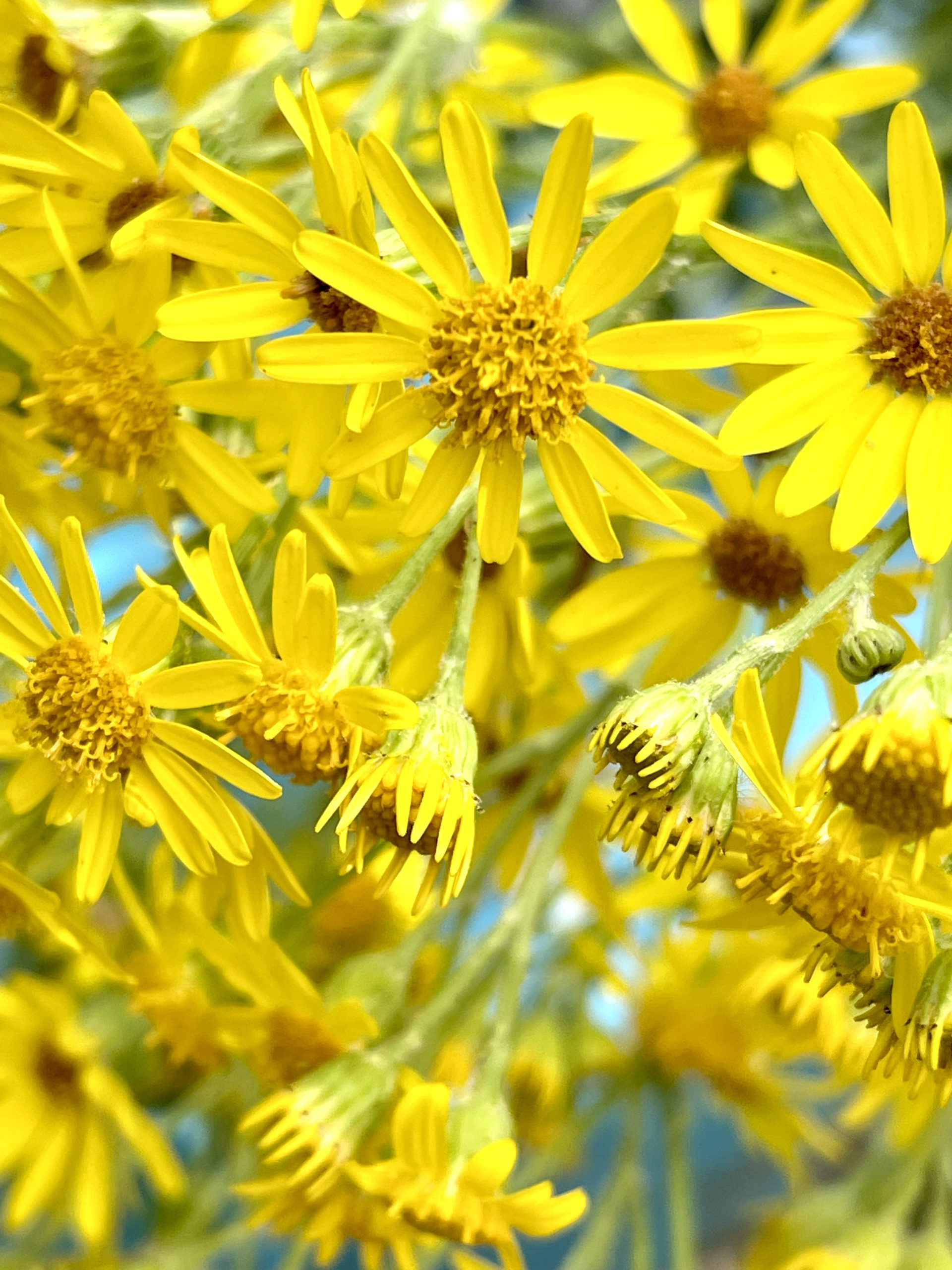
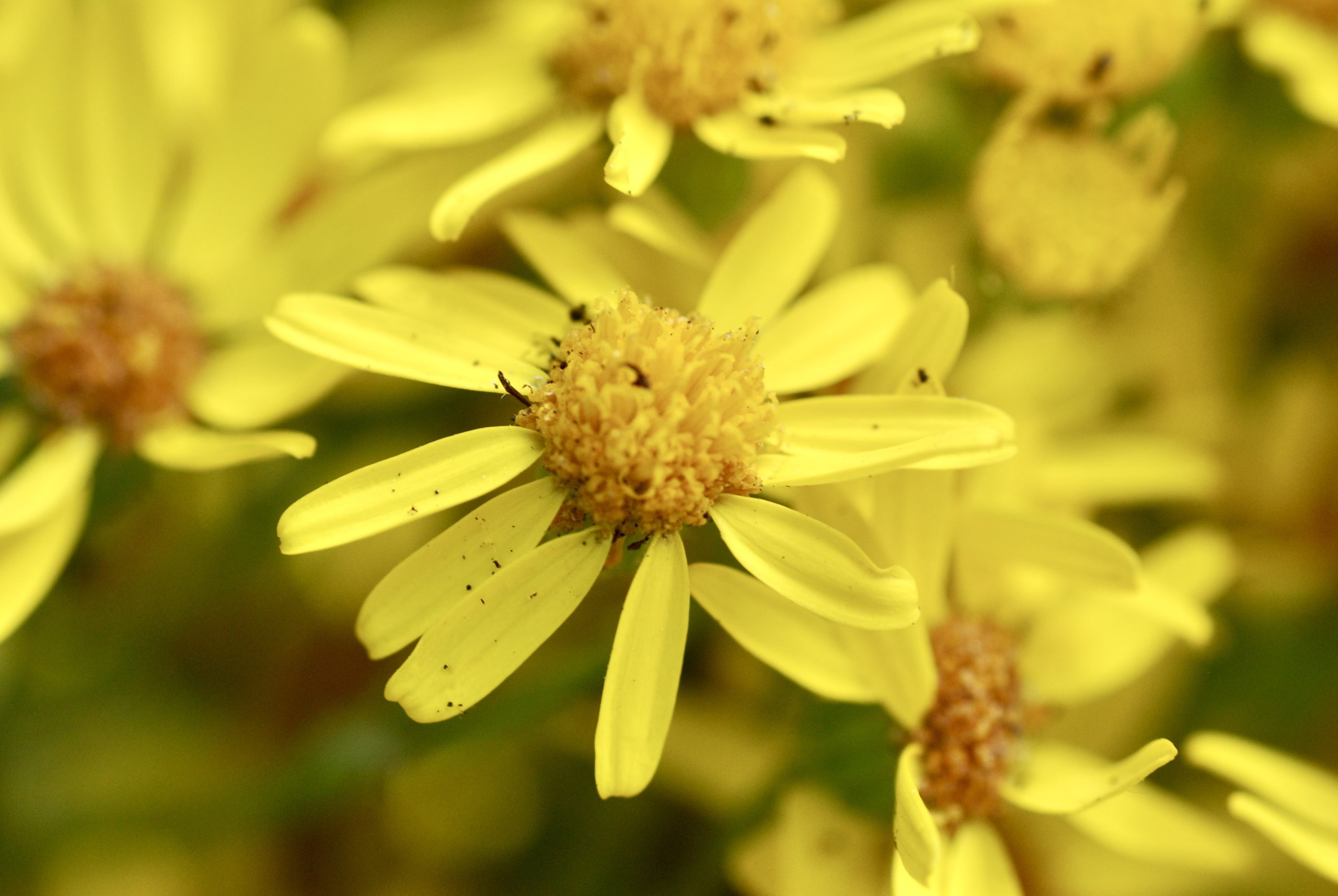
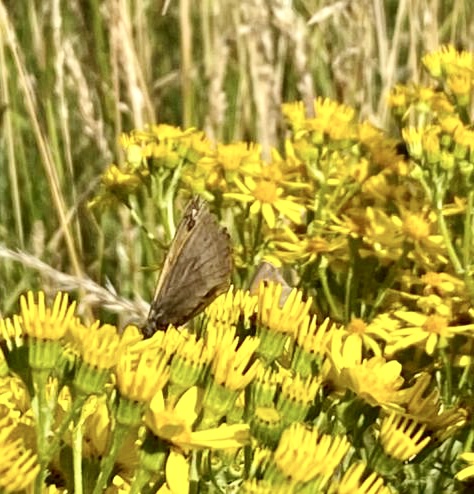
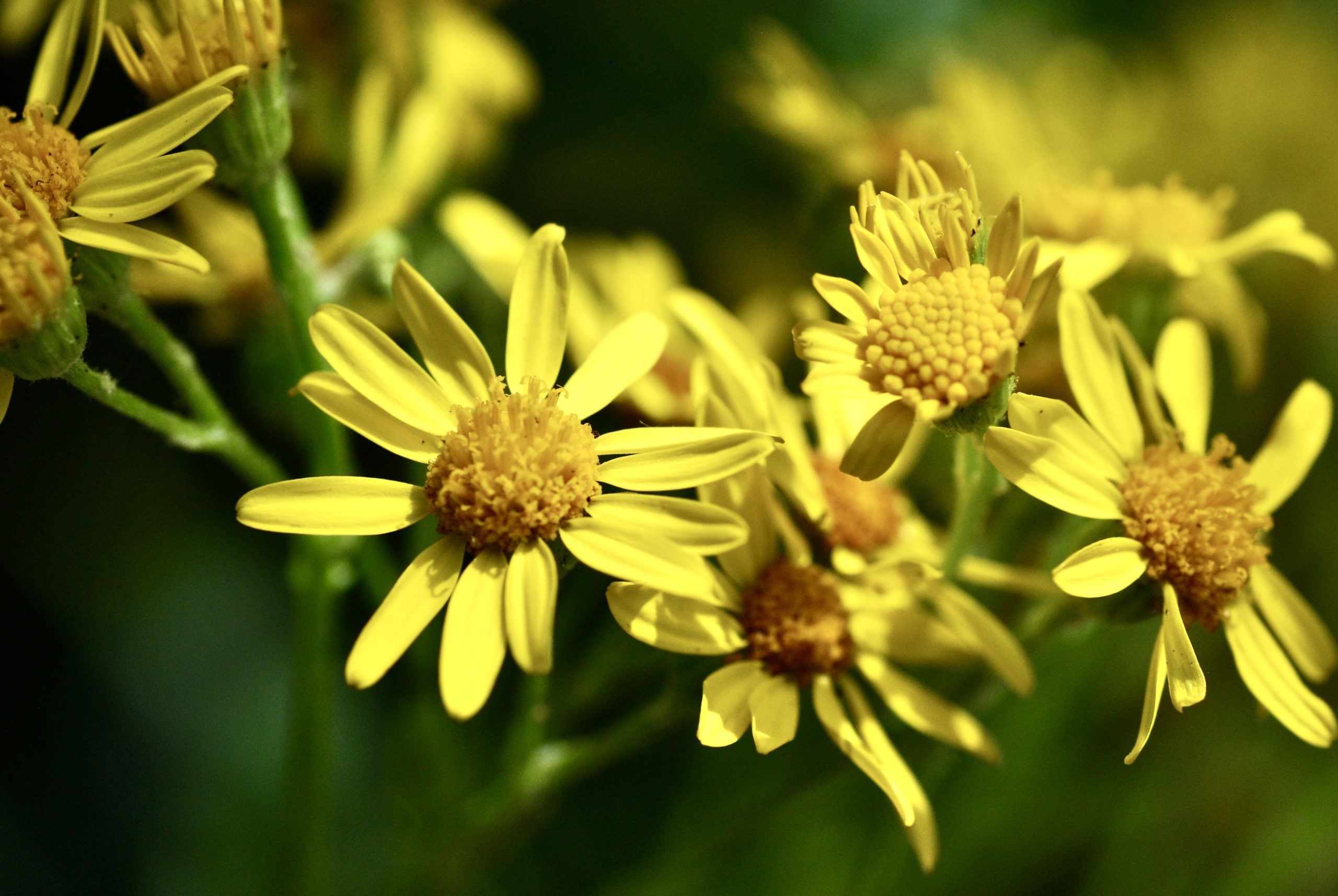
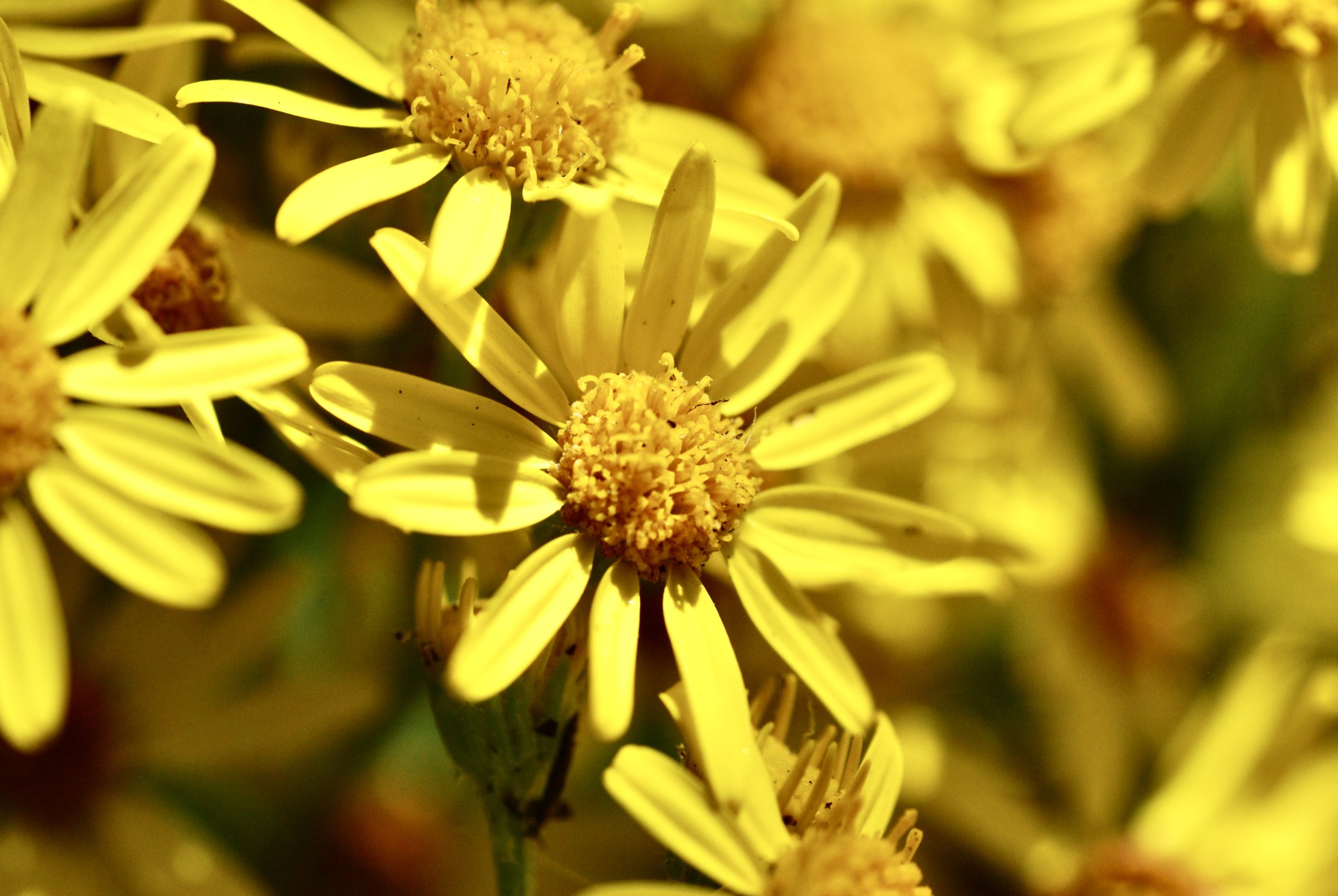
The plant is much loved by pollinators - bees, flies, moths and butterflies. It is generous in its nectar production, and has been placed in the top ten of nectar producers by one survey. The plant also provides a home and / or a food source for seventy plus species, many of which feed on the plant exclusively. Some of these species are the IUCN RED LIST. One species that is reliant on this plant is the cinnabar moth, whose status is described as ‘common and widespread, but rapidly declining”.
However, important as the plant is in ecological terms, it is toxic as it contains a number of alkaloids. These are poisonous to a number of animals (including horses and cattle). The bitter taste is a ‘disincentive’ for too much of the plant to be eaten. However, because of the alkaloids, it is one of the five plants (in the UK) named as ‘an injurious weed’ [under the Weeds Act of 1959]. Some people also suffer an allergic reaction after handling the plant, experiencing a form of dermatitis.
{The cinnabar moth feeds on the plants absorbing the alkaloids, these make it distasteful to its predators}.
A gallery
